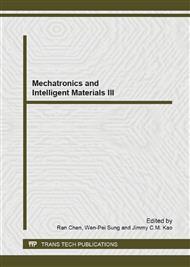p.1500
p.1504
p.1511
p.1516
p.1520
p.1524
p.1529
p.1533
p.1537
Research on Hysteresis Characteristic Model of Wheel Carcass
Abstract:
In the existing wheel model, rim and rigid ring are connected with six direction spring and damper, which represent the elasticity of wheel carcass. In this paper, based on the ASCL original wheel model, the six direction hysteresis characteristic model of wheel carcass is built. In the vertical direction, Berg model which is widely used to describe the hysteresis characteristics of the rubber bushing is built to describe the hysteresis of wheel carcass, whose dynamic parameters are more consistent with the actual situation. In the other direction, the Fancher formula is used to describe the relationship of the force and displacement. Results showed out that the model has a high accuracy and is able to accurately describe hysteresis characteristics of wheel carcass by comparison with the suspension system K&C experimental results.
Info:
Periodical:
Pages:
1520-1523
Citation:
Online since:
June 2013
Keywords:
Price:
Сopyright:
© 2013 Trans Tech Publications Ltd. All Rights Reserved
Share:
Citation:


